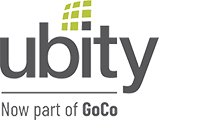A
Administrator Account
An administrator account is a user account that allows you to make changes that will affect other users. Administrators can change global settings, make changes to other user accounts, add services and order equipment.
API
An application programming interface (API) is a set of subroutine definitions, protocols, and tools for building software and applications. A good API makes it easier to develop a program by providing all the building blocks, which are then put together by the programmer.
ATA
An ATA (Analog Telephone Adapter) is a device for connecting traditional analog telephones, fax machines, and similar customer-premises devices to a digital telephone system or a voice over IP telephony network.
C
Caller ID
The caller ID is the information that is transmitted and displayed on the called party’s telephone equipment (generally, caller’s name and number).
Call queue
A call queue is an automatic process used to distribute incoming calls to specific resources. A call queue places incoming calls in line to be answered while extension users are busy with other calls. Call queues are particularly used in inbound call centers.
Context
A context is a specific call flow. You can have multiple contexts in your company if you have several phone numbers with different call flows (different greeting messages, different options, etc).
D
DID
The acronym DID (Direct Inward Dialing) refers to a phone number.
Direct line
Phone number that rings directly an extension.
E
Ethernet cable
A ethernet cable is used for connecting devices to a network.
(Synonyme: Network cable)
(Synonyme: Network cable)
Extension
Digits that are used to reach a phone in particular.
F
Find-me/Follow-me
Find Me/Follow Me refers to two technologies that, in conjunction enable incoming phone calls to be received at different locations, on different phones. If this option is enabled on your extension, callers will be able to reach you on your cellphone for exemple.
G
Greeting message
With IVR technology, the greeting message welcomes callers and indicates the options that can be dialed.
(See also: IVR)
(See also: IVR)
I
IP Address
An IP address (Internet Protocol address) is a numerical label assigned to each device participating in a computer network that uses the Internet Protocol for communication. It is generally represented in dot-decimal notation, which consists of four decimal numbers, each ranging from 0 to 255, separated by dots, e.g., 172.16.254.1
IVR
An IVR (Interactive Voice Response), also called automated attendant, is a technology that allows customers to interact with a company’s host system via a telephone keypad. It is generally a message that lists different options that can be chosen by callers.
(See also: Greeting message)
(See also: Greeting message)
L
Line on demand
Your plan includes a number of lines. This number of lines represents the number of concurrent calls (incoming and outgoing) included in your package. If you exceed this number, we will release a new line. This line, called line on demand, is charged in addition to your package .
LNP
LNP (Local Number Portability) enables a consumer to keep his telephone number when he changes telecommunications service providers.
Local zone
Area in which outgoing calls are considered as local.
M
MAC
Media Access Control
(See also: MAC address)
(See also: MAC address)
MAC address
A MAC address (media access control address) is a unique identifier assigned by a manufacturer to an ethernet hardware.
Modem
A modem modulates outgoing digital signals from a computer or other digital device to analog signals for a conventional copper twisted pair telephone line and demodulates the incoming analog signal and converts it to a digital signal for the digital device.
N
Network cable
A ethernet cable is used for connecting devices to a network.
(Synonyme: Ethernet cable)
(Synonyme: Ethernet cable)
Q
QoS
Quality of service (QoS) is the overall performance of a telephony particularly the performance seen by the users of the network. Quality of service refers to traffic prioritization and resource reservation control mechanisms rather than the achieved service quality. Quality of service is the ability to provide different priority to different applications, users, or data flows, or to guarantee a certain level of performance to a data flow.
R
Router
A router is a networking device that forwards data packets between computer networks. Routers perform the traffic directing functions on the Internet.
S
SIP
Session Initiation Protocol (SIP) is a communications protocol for signaling and controlling multimedia communication sessions.
(See also: SIP account, SIP line)
(See also: SIP account, SIP line)
SIP account
A SIP (Session Initiation Protocol) account authenticates and locates the device initiating a session. Each SIP device (deskphone, softphone, ATA, etc) has to be assigned to a SIP account to work properly.
(See also: SIP)
(See also: SIP)
SIP line
A SIP line represents a SIP connexion (inbound or outbound call).
(See also: SIP)
(See also: SIP)
Softphone
A softphone is a software program for making telephone calls over the Internet using a general purpose computer, rather than using dedicated hardware. The softphone can also be installed on a piece of equipment such as a workstation, portable computer, tablet or even a cellphone and allows the user to place and receive calls without requiring an actual telephone set.
T
Trunk line
A direct line between two telephone switchboards (IPPBX)
V
VoIP
Voice over Internet Protocol (VoIP) is a methodology and group of technologies for the delivery of voice communications and multimedia sessions over the Internet.
#
911 Address
In the event of an emergency, your 911 address will be transmitted to the operator, who will then route the emergency call based on this address. It is crucial that you keep your location information up to date.


